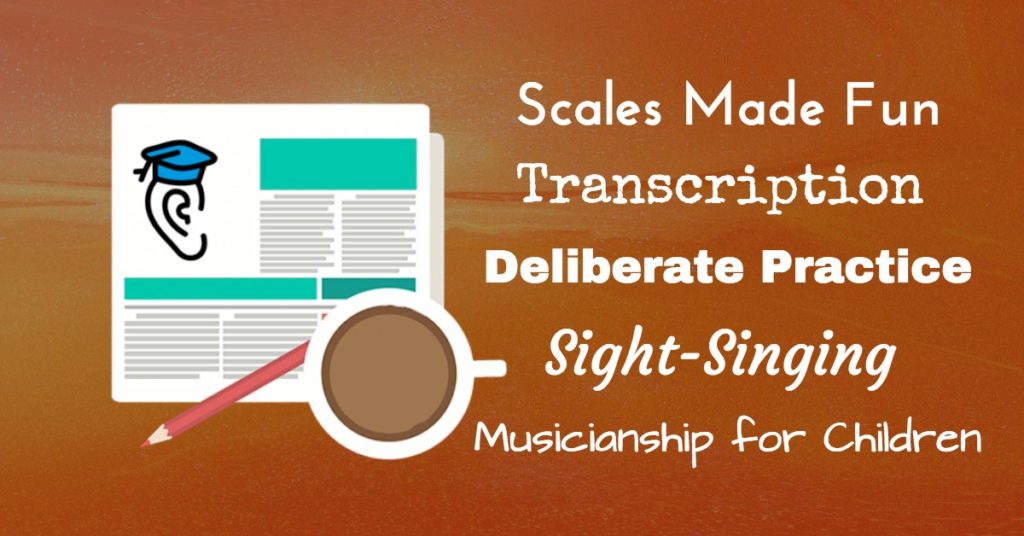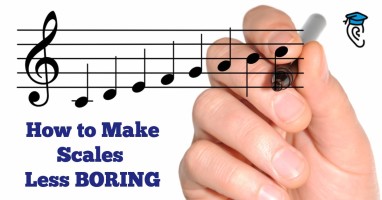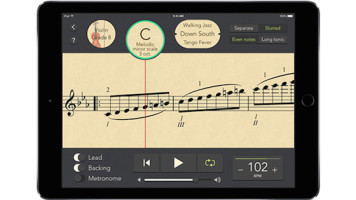Easter weekend is here, and whether or not you are celebrating Easter itself, the long weekend is a great opportunity for some extra music practice! This week we have tutorials and exercises on sight-singing and transcription using solfa, and ideas on how to make practicing scales interesting and fun. Also an article on deliberate practice, an introduction to the Romantic era, and a member of the Let’s Play Music team reveals how to raise musical children.
Before we get started, here’s a remarkable new release I wanted to share with you:
We recently interviewed indie artist Marc with a C about his songwriting process. Today he released a new EP of 7 songs to help fund the medical treatment of one of his fans who has cystic fibrosis. You can listen to the first track of the EP using the embedded player below, and then please click through to the Bandcamp page to read the full story, listen to the rest of the EP, and buy a copy to support this wonderful fundraising initiative.
Perfect Practice
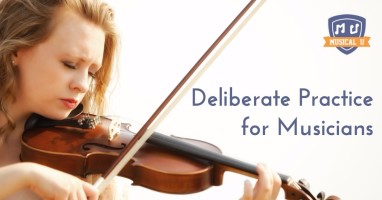 Do you ever feel like you practice for hours and hours, but never reach the level of instrument playing you aspire to? Many musicians feel this way – but the good news is that there’s a solution.
Do you ever feel like you practice for hours and hours, but never reach the level of instrument playing you aspire to? Many musicians feel this way – but the good news is that there’s a solution.
We’re often told that practice makes perfect, but this is not entirely accurate. In fact, it is perfect practice which makes perfect. Scientific studies have found the four key components of perfect practice – more accurately called deliberate practice. Find out what they are in this week’s Musical U blogpost Deliberate Practice for Musicians, and accelerate your journey to becoming the musician you aspire to being.
You can learn more about this idea in this great summary of deliberate practice over at expertenough.com. Before you dive in though, check this thought-provoking piece on who should practice deliberately – and who should just practice!
Sight-Singing with Solfa
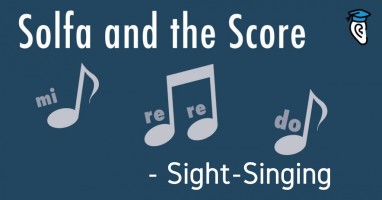 The latest part in our Solfa and Score series talks about sight-singing. Use your new knowledge of the spoken solfeggio and melodies using notes from the pentatonic scale, and you’ll surprise yourself at how easy these four sight-singing exercises are!
The latest part in our Solfa and Score series talks about sight-singing. Use your new knowledge of the spoken solfeggio and melodies using notes from the pentatonic scale, and you’ll surprise yourself at how easy these four sight-singing exercises are!
Write What You Hear
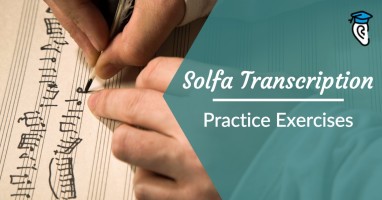 Following on from last week’s Solfa and the Score tutorial on transcription, we have collected together a set of solfa transcription exercises to help you practice! Divided into three levels, easy, medium and hard, these exercises will help you write down the music you hear with ease and accuracy.
Following on from last week’s Solfa and the Score tutorial on transcription, we have collected together a set of solfa transcription exercises to help you practice! Divided into three levels, easy, medium and hard, these exercises will help you write down the music you hear with ease and accuracy.
In all our tutorials we use the moveable do system of solfège. If you’ve heard of fixed do and wondered what the difference is, check out this great introduction to solfège by Albert Frantz of key-notes.com. While you’re there, be sure to check out his exciting KickStarter campaign for the next generation of piano training online – just a few days left!
Musicianship for Children
 Many musical (and non-musical) parents hope that their children grow up to love music the way they do. But how can you nurture your child’s musicality?
Many musical (and non-musical) parents hope that their children grow up to love music the way they do. But how can you nurture your child’s musicality?
Let’s Play Music is a three year program for under 4s which teaches all the key musicianship skills including ear training, through the medium of play. Find out more about this innovative program in this interview with one of their team, Gina Weibel. Be sure to also explore the excellent LPM blog!
How to Make Scales Less Boring
Scales and fun aren’t words which often appear in the same sentence, but scales are an important part of instrument learning. Not convinced? Here are three good reasons to bother practicing scales.
Because of their importance and usefulness we have compiled a list of ways to make scales an interesting and fun part of your instrument practice. Find out how you can make scales less boring.
Need more inspiration for your scales practice? Try these suggestions from HarpMastery.com – and here’s a fun infographic from TakeLessons.com with a few more suggestions!
Scales infographic (click to enlarge)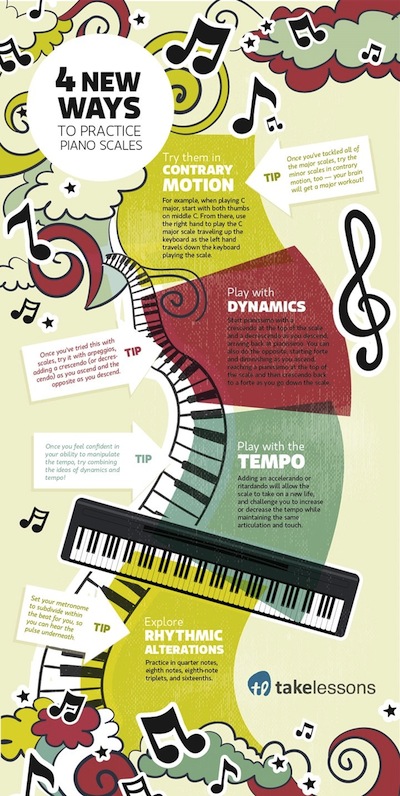
One of our tips was to try playing to a backing track rather than a simple metronome beat. It turns out there’s a handy iOS app designed for exactly that! Take a look at SmartScales.
The Romantic Era
 Did you know that Romantic music isn’t just slushy love songs – but actually a specific genre of music from the 18th and 19th century? It was also the first time that musical style really diverged from the societal norms of the times. Read about this important pivotal musical era in An Intro to the Romantic Era.
Did you know that Romantic music isn’t just slushy love songs – but actually a specific genre of music from the 18th and 19th century? It was also the first time that musical style really diverged from the societal norms of the times. Read about this important pivotal musical era in An Intro to the Romantic Era.
You can learn more about the Romantic era of music in this great video presentation:
Finally I’ll leave you with this…
Musical Fact of the Day: Did you know that every song sounds better with a heavy metal drummer? Yes, every song…
Now you should be all set for some perfect practice this on this lovely springtime weekend. To keep up to date on all our latest resources, check out the Easy Ear Training and Musical U facebook pages. If you are looking for a friendly community to help and guide you through achieving your musical goals visit the Musical U website to find out more.

